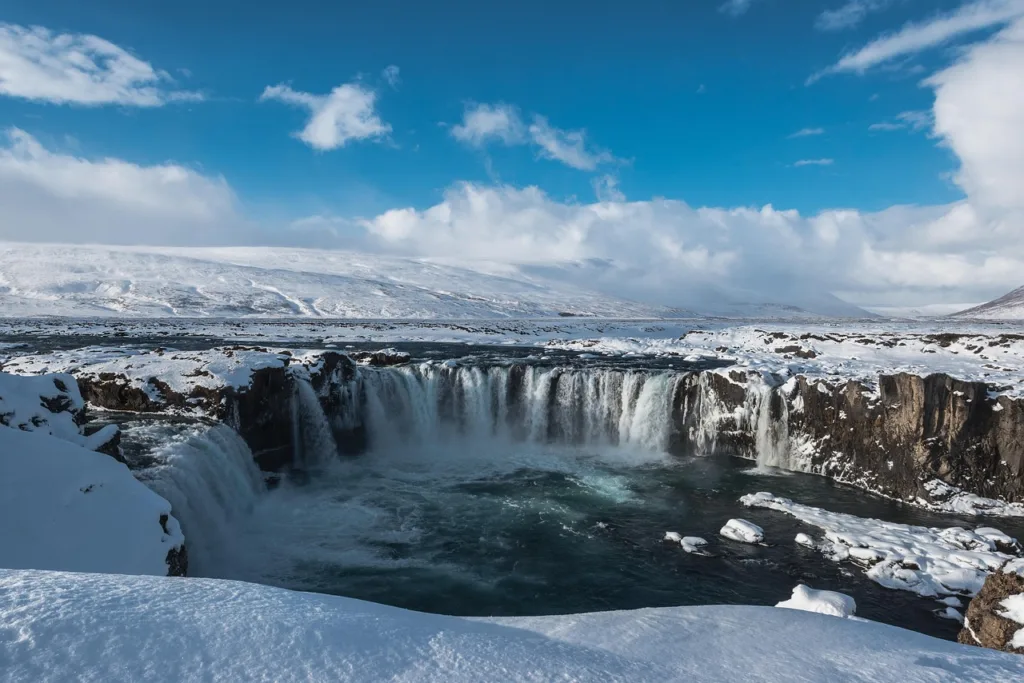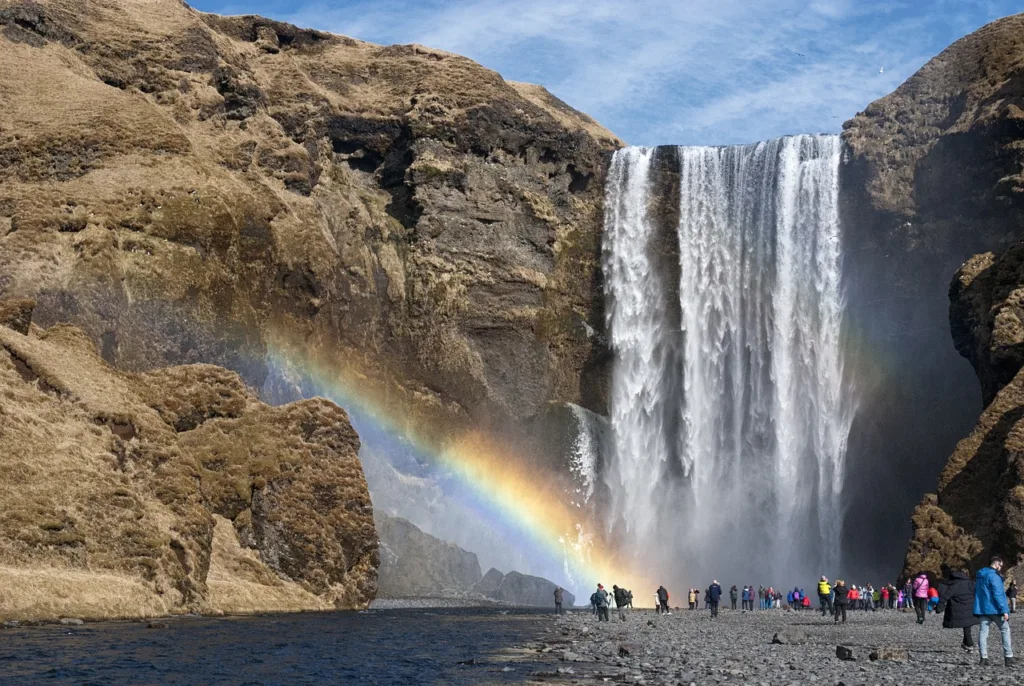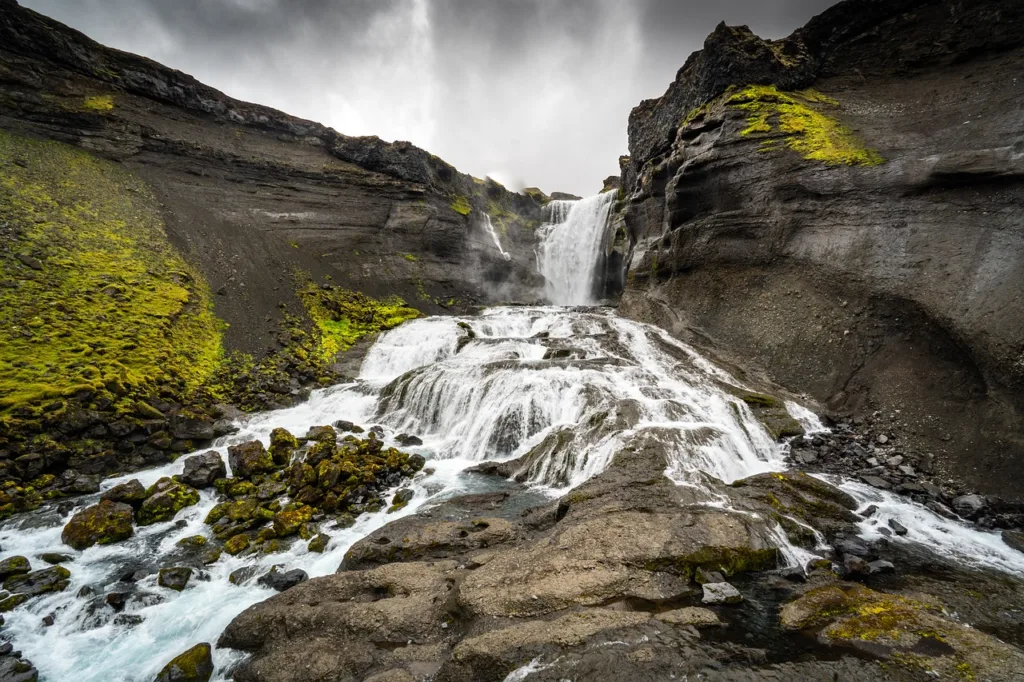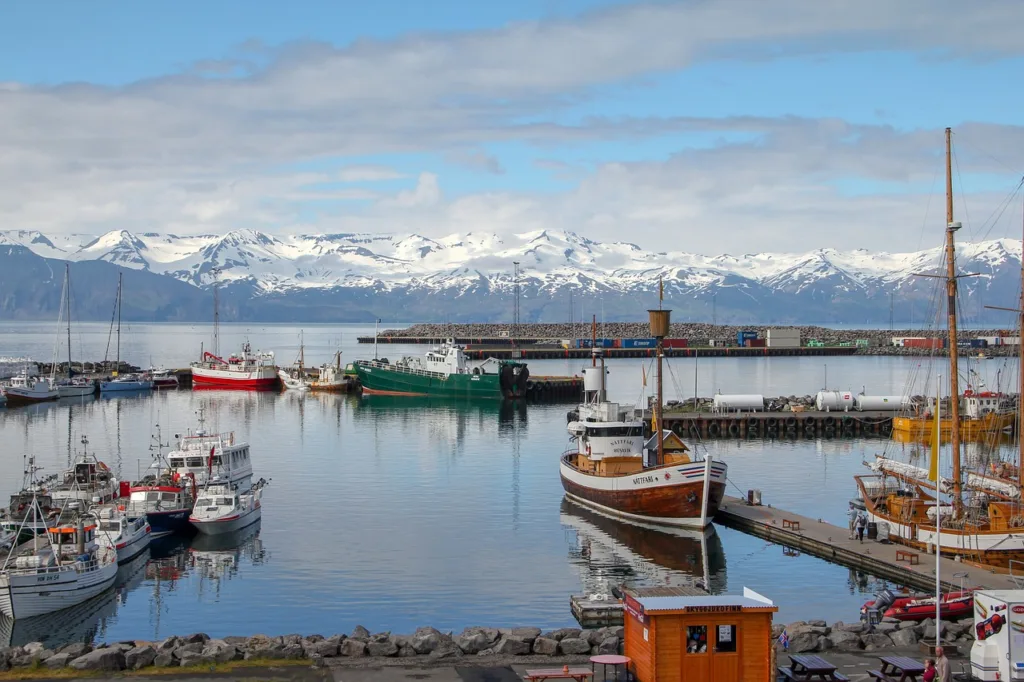Iceland: A Land of Mystical Landscapes and Natural Wonders
Nestled in the North Atlantic Ocean, Iceland stands as a captivating realm where nature’s most dramatic forces have sculpted a breathtaking canvas. Known as the “Land of Fire and Ice,” this Nordic island nation boasts an otherworldly landscape adorned with glaciers, volcanoes, geysers, and vast expanses of rugged wilderness. Its ethereal beauty and geological marvels draw adventurers and nature enthusiasts alike, offering a glimpse into a world shaped by ancient glaciers, spouting geysers, and the mesmerizing dance of the Northern Lights. Beyond its natural wonders, Iceland’s rich history, vibrant culture, and warm-hearted locals make it a destination unlike any other, inviting visitors to explore its diverse terrain and immerse themselves in its awe-inspiring beauty.
Iceland Waterfalls: A Guide to Nature’s Spectacles
Iceland’s waterfalls are renowned for their breathtaking beauty, making this country a global hotspot for these natural wonders. With a terrain that seamlessly blends rugged mountains and summer-thawed glaciers, Iceland boasts an astounding number of over 10,000 waterfalls. During my month-long exploration of the country, I embarked on a journey to discover some of the most captivating waterfalls, creating this comprehensive guide.
Starting with the southern waterfalls and following the Ring Road in a counter-clockwise direction, my itinerary led me on an adventure encompassing the entire island, including visits to the remote Westfjords and the mesmerizing Snaefellsnes Peninsula before circling back to western Iceland near Reykjavik. Though the driving was occasionally tiring, the sights encountered along the way made every moment worthwhile. Each waterfall on this list is accessible either by a regular 2WD car or a bit of light hiking, ensuring an achievable yet awe-inspiring experience for fellow travelers.
Unveiling South Iceland’s Majestic Waterfalls
1. Seljalandsfoss Waterfall
Location: Positioned as one of the initial sights on the southward drive from Reykjavik along the Ring Road, Seljalandsfoss holds a prime spot among Iceland’s iconic waterfalls.
Distinct Experience: Beyond its visual charm, Seljalandsfoss offers a unique opportunity to venture behind the cascading water. Walking the path behind the falls provides an immersive encounter, enveloped in the misty embrace of nature. However, caution is advised with electronic devices due to the pervasive mist.

2. Gljufrabui Waterfall
Location: Concealed within a brief 5-minute walk from Seljalandsfoss, Gljufrabui remains a hidden treasure nestled in the Icelandic landscape.
Secretive Appeal: This waterfall resides within a cave, adding an element of mystery to the experience. Visitors can opt to explore by either entering the cave opening or ascending above it, peeking through an aperture in the cave’s ceiling.
3. Skogafoss Waterfall
Location: Skogafoss stands as a captivating marvel in South Iceland’s landscape, offering an enchanting visual spectacle.
Natural Magnificence: With its picturesque setting characterized by black volcanic sands lining the shore, Skogafoss boasts a mesmerizing contrast against the verdant cliffs. Standing at an impressive 60 meters in height and stretching 25 meters wide, this waterfall captivates with its sheer grandeur.
4. Kvernufoss Waterfall: A Hidden Gem Near Skogafoss
Location: Situated close to Skogafoss, Kvernufoss remains a lesser-known yet remarkable waterfall, standing at a height of 30 meters (100 feet).
Undiscovered Charm: Accessible via a short hike from Skogar, the trail leading to Kvernufoss traverses a scenic path through a mesmerizing green canyon, reminiscent of scenes from a fantastical world, akin to those found in the realms of “Lord of the Rings.” The hike alone, owing to its picturesque surroundings, is a worthwhile experience.

5. Svartifoss Waterfall: Nature’s Unique Artistry
Location: Svartifoss stands out among Iceland’s waterfalls due to its uniqueness. The name “Svartifoss,” translating to ‘black falls,’ owes itself to the dark lava basalt columns that encompass the cascade.
Distinctive Features: Despite appearing modest in photographs, Svartifoss boasts a height of about 20 meters, captivating visitors with its distinct surroundings characterized by these dark lava basalt columns.
Svartifoss and Kvernufoss add to the allure of South Iceland’s waterfall circuit, each offering a unique ambiance and visual appeal amidst the region’s natural wonders.
6. Hengifoss Waterfall: The Martian Marvel
Location: Standing among Iceland’s most incredible waterfalls, Hengifoss competes fiercely with Dynjandi and Haifoss for its astounding beauty. Its appearance is reminiscent of an otherworldly landscape, almost resembling scenes from Mars. The striking red clay lines, sandwiched between layers of rock, lend it an utterly bizarre and surreal look. Remarkably, it claims the title of being the second tallest waterfall in Iceland, soaring at 130 meters (420 feet).
7. Litlanesfoss Waterfall: Basalt Columns Beauty
Location: En route to Hengifoss, Litlanesfoss captures attention much like Svartifoss (#5), surrounded by peculiar basalt rock columns.
Unique Appeal: Though not the tallest among Iceland’s waterfalls, standing at 30 meters in height, Litlanesfoss distinguishes itself through its surrounding basalt formations. As a bonus, this captivating waterfall offers a complimentary visual delight during the hike to Hengifoss—a two-for-one Icelandic waterfall experience.
8. Gufufoss Waterfall: Skogafoss’s Secluded Twin
Location: Resembling a twin to Skogafoss, Gufufoss stands as a notable waterfall destination, relatively unmarred by crowds of tourists.
Scenic Delight: Similar to Skogafoss, Gufufoss cascades into a rocky stream, offering a picturesque sight. Visitors can indulge in a short hike leading up to the top of the waterfall, adding to the allure of this less-visited Icelandic gem.
The East Iceland waterfalls showcase a diverse range of landscapes and geological wonders, each offering its own allure and contributing to the region’s natural charm.

9. Dettifoss Waterfall: Europe’s Mighty Cascade
Location: Dettifoss reigns supreme as Europe’s most powerful waterfall, nourished by a massive glacial river. The sheer chaos and immense volume of water rushing through this spectacle create a mesmerizing and overwhelming sight. Caution is advised to maintain a safe distance from the edge due to the sheer force—though, like me, the temptation for a closer look can be hard to resist!
Accessibility: Situated about 170 kilometers (105 miles) east of Akureyri, Dettifoss requires a mere 40-minute detour from the Ring Road in eastern Iceland, making it a relatively accessible and breathtaking stopover.
10. Godafoss Waterfall: A Saga of Icelandic Conversion
Location: Godafoss holds historical significance, witnessing a symbolic event during Iceland’s transition from paganism to Christianity. Legend has it that during this period, the leader ceremoniously tossed old Norse idols into this waterfall. The name “Godafoss,” translating to ‘waterfall of the gods,’ originates from this tale.
Aesthetic Charm: Godafoss presents a series of falls converging into a horseshoe-shaped cascade adorned with captivating blue hues, imparting an almost surreal appearance. Its resemblance to a miniature Niagara Falls is striking.
Accessibility: Located approximately 50 kilometers (30 miles) east of Akureyri in northern Iceland, Godafoss stands adjacent to the Ring Road, making it an unmissable attraction for travelers exploring eastern Iceland.
The North Iceland waterfalls, Dettifoss and Godafoss, offer a blend of historical significance, natural grandeur, and accessible beauty, adding to the allure of this region’s remarkable landscapes.
Other Waterfalls to explore in the West Iceland:
Dynjandi Waterfall: Nature’s Roaring Symphony
Location: Dynjandi stands tall as one of Iceland’s most colossal and impressive waterfalls. Its appearance resembles a multitude of smaller waterfalls merging into one vast cascade, coursing over the rocks. Standing at a height of 100 meters, its thunderous roar can be heard from the parking lot, nearly a kilometer away.
Accessibility: Situated in the Westfjords, Dynjandi is among the more remote waterfalls on this list. Located about 360 kilometers (220 miles) north of Reykjavik, reaching it involves navigating steep and daunting roads in the fjords. However, it remains accessible even with a standard 2WD rental vehicle. The challenge of getting there is rewarded by the sheer magnificence of one of Iceland’s finest waterfalls.

Kirkjufellsfoss Waterfall: An Iconic Icelandic Vista
Location: Kirkjufellsfoss stands as an iconic symbol of Iceland’s natural beauty. The view of the green mountain and its trio of miniature waterfalls epitomizes the essence of the country.
Name Origin: The waterfall’s name, “church mountain falls,” derives from the nearby peak that somewhat resembles a church. Some find it akin to a wizard’s hat, adding a touch of fantasy reminiscent of scenes from “Lord of the Rings.”
Bruarfoss Waterfall: The Blue Jewel of Iceland
Location: Bruarfoss claims distinction as perhaps the bluest waterfall in Iceland and possibly the world. Its simplicity—a waterfall flowing into a crevice amidst the rocks—adds to its allure.
Aesthetic Marvel: What captivates admirers are the breathtaking colors: the black volcanic rocks juxtaposed with the flawless blue glacier water. The scene is almost surreal, drawing admiration for its unmatched beauty.
Bruarfoss, Kirkjufellsfoss, and Dynjandi contribute their unique charm to Iceland’s landscape, each presenting a distinct visual treat and a glimpse into the country’s diverse natural wonders.
Gullfoss Waterfall: The Golden Circle Gem
Location: Gullfoss holds a prominent place within the Golden Circle, one of Iceland’s most sought-after tourist routes. This expansive waterfall descends in two striking steps, offering multiple viewpoints for visitors to admire its grandeur.
Accessibility: A mere 1.5-hour drive from Reykjavik, Gullfoss’s proximity to the capital contributes significantly to its fame, making it one of the most renowned waterfalls in the country.
Haifoss Waterfall: A Panoramic Marvel
Location: Haifoss emerges as a personal favorite among Iceland’s waterfalls, albeit one of the more challenging ones to access. However, the effort is undoubtedly rewarding.
Impressive Heights: Standing at a staggering 120 meters (400 feet), Haifoss ranks as the country’s third tallest waterfall. Adding to its allure, a second substantial waterfall flows into the same canyon, amplifying the grandeur of the already impressive landscape. The resulting panoramic views offered here are nothing short of awe-inspiring.
Haifoss and Gullfoss, each with its unique accessibility and panoramic views, contribute to the allure and diversity of Iceland’s remarkable collection of waterfalls.

In Iceland, waterfalls paint an incredible picture of nature’s strength and beauty. From the roaring power of Dettifoss to the hidden charms of Litlanesfoss, these cascades tell tales of Iceland’s diverse landscapes. Whether it’s the famous Gullfoss or the remote wonder of Haifoss, each waterfall leaves a lasting impression, inviting us to witness the breathtaking magic of nature. These cascades, whether nestled in quiet corners or standing proudly along well-traveled paths, are timeless reminders of Iceland’s awe-inspiring natural treasures.
Read also: https://growbywill.com/acadia-national-park-maine-explore-the-best-hiking-trails/
